-
Posts
799 -
Joined
-
Last visited
Content Type
Events
Forums
Downloads
Quizzes
Gallery
Blogs
Posts posted by Mitker
-
-
- Popular Post
15 minutes ago, AustinRacing said:Question is how was she able to pass security in bkk with that much? Perhaps miscommunication between corrupt airport staff here and there.
Another scenario is that BKK detected the stuff and liaised with Colombo to inform them, so they could catch her at arrival (saving themselves all the hassle involved)
-
 2
2
-
 14
14
-
 2
2
-
 3
3
-
- Popular Post
21 hours ago, Georgealbert said:Picture courtesy of CH7.
Residents were left stunned in the early hours of 18 May, when a naked foreign man, believed to be aged about 40, escaped from a local hospital and went on a destructive rampage through the city’s Naklua area.
At approximately 00:30, officers from Banglamung Police Station were alerted to reports of a foreign national behaving erratically and completely nude near Naklua Soi 9. Eyewitnesses described scenes of chaos as the man, armed with a chair and a large stone, wandered the area shouting incoherently and damaging nearby property.
Police and rescue workers from the Sawang Boriboon Foundation were swiftly deployed to the scene, where they found the man in a highly agitated state. Efforts to calm him proved difficult and he reportedly resisted all attempts at communication or cooperation. The situation escalated as the man threw objects, including stones and furniture, at the officers and rescue team members.
According to Mr Kamphon Malison, a rescue volunteer, his team had been initially dispatched to provide assistance to a distressed foreign patient who had fled from a hospital. “When we arrived, he had already broken free from police custody once and continued to flee. He was in a frenzied state, throwing stones and chairs at us,” Mr Malison stated.
Authorities spent around 30 minutes attempting to subdue the man, eventually restraining him with great difficulty. He was taken to Banglamung Police Station to calm down, though further details about his condition, nationality, and reasons for hospitalisation have not been disclosed.
Fortunately, no injuries were reported despite the man’s violent behaviour. Police are continuing to investigate the circumstances of the incident and have not yet revealed whether any charges will be brought.
 Adapted by Asean Now from CH7 2025-05-18.
Adapted by Asean Now from CH7 2025-05-18.
No idea what's on this picture..
-
 2
2
-
 5
5
-
 1
1
-
10 hours ago, brfsa2 said:
Cricket protein is amazing, if you do weight training, you gotta try it!
It's not too expensive but not that cheap, I get 1kg for 1000baht. I finish it in 2-3 weeks.
It has all the amino-acids and extra, it has some vitamins and also chitin (a prebiotic fiber)
anyone has found cheaper sources? dont tell me to eat crickets, I can eat, but dont enjoy the diarrhea that comes after 💩
Lately I tried PEA protein and it feels a lot better to digest than Why or Cricket.
We had a home-made pizza with cricket topping the other day
Excellent and no side effects after that
The walnut smell emitted when cooking is amazing
Just think that they're part of the same family as shrimps (that we have no trouble eating)-
 1
1
-
-
18 minutes ago, lom said:
Shopee has a kit for measuring up to 100A, communicating over RS485-ModBus
https://shopee.co.th/product/274610962/24942397874
Thanks for this 😉
-
1 hour ago, lom said:
Then install a CT (current transformer) to such board and measure the imported power from grid and let that regulate how many of those additional consumers you enable. Basically add consumers until there is an import from the grid and then remove until import disappear.
In the long term I would rather avoid this empirical approach as I mentioned, but it may come handy in order to establish this theoretical generation curve as a start
-
2 hours ago, Bandersnatch said:
I agree with what @JBChiangRai posted above. Any unused solar production from my off-grid solar setup is curtailed.
The screen shots I posted were early this morning - a very dull day here in Surin.
Here are 2 more screen shots that I have just taken, one with one of my EVs charging the other without.
Thanks for these
They seem to confirm what @JBChiangRai was explaining about the extra potential production being unknown by the inverter
(my hope was that, by having to 'discard' this excess some way, it would be able to figure it out..)
This being said, I'll consider the Solar Assistant app for the other features
-
 1
1
-
-
3 hours ago, JBChiangRai said:
It's not normally possible to tell the unused power available for generation. This is because the inverter doesn't know it, it can only know what the maximum power can be by trying to max out the available power. In normal use, you're not using the available power and there is no way the inverter can know what that is.
What I have done is max out the inverter (by grid export) and graph it by 30 minute intervals. If the sun is shining, I know roughly what is available from my chart before drawing power from the grid.
That's an interesting approach I didn't think about.
Thanks
By modelling a theoretical curve of the power generated by the system in sunny conditions on one side (as you did), and by comparing it with the data provided by a small panel as an indicator of the real conditions on the other side, maybe that combining both information would make it possible to estimate quite precisely the total power available at a given moment
The next step would be to deduct the loads at that moment to have an idea of what's left available -
and I do agree with your appreciation of the ShinePhone App
I never had battery connected, as confirmed on the inverter screen info, but the app keeps telling me how well my batteries are currently charging (?!)
Useless
-
 1
1
-
-
Thanks for these infos
Interesting to see that from the screenshot you sent, it looks like you get this very data I'm looking for, under the 'solar PV' wattage figure (5232 W).
My only uncertainty it that this value is very close (by a couple of %) to the sum of the loads and the battery charge.
Would this be due that by chance that day your use was that close from what the system was generating, or that what appears under 'solar PV' is just the sum of the uses plus some losses and roundings ? In the later case, it wouldn't inform about the 'untapped' portion of solar power
Does it happen that the dashboard shows value of 'solar pv' wattage significantly higher than your loads + battery charge ?
And yes, I had seen your video about the wifi remotely controlled breaker. Very convenient and I'm currently thinking about something like this for my own system
Thanks again -
Hi,
I started running a Growatt SPF6000ES inverter, with which I'm globally satisfied, on an On-Grid (but no export) configuration. No batteries at this stage.
In order to optimize the system, meanwhile the primary devices are already running and if there's any power produced by the panels unused, I'd like to automatically launch secondary equipments (ex: oxygenating pumps for the ponds, tank water heater, etc.).
This implies I would need to collect this information (amount of extra power available) first, in real time and continuously.
My question is : Is this a data that can be retrieved somehow from the inverter ?
(I have no idea if the inverter is even in condition to estimate this value)
I didn't find any mention of this on the UM or searching on the net.
Thanks for any info or experience on the topic,
ps: definitely not a geek in electronics, but I should be able to write down and inject some basic code on a board that would process the data and run a few relays accordingly 😉
ps2: I don't want to go the empirical way (progressively increasing loads until detecting the inverter must draw from the grid) - unpractical -
On 4/12/2025 at 9:51 AM, keysersoze276 said:
It’s my two cents. Not 50 cent. Too much rap got you confused?
indeed 😉
-
- Popular Post
- Popular Post
I think it is due to the proximity of the 'capturing device' (and the light conditions) and the distortion it creates
The shorter the distance, the worse the distortion of the image
Typically, a selfie will be an arm length away
A mirror will usually be quite further and the 'image' will do a return trip from your face back to your eyes, so double this distance : your appearance will be much closer to the reality
(plus, typically, mirrors are placed in an environment with favorable lighting)
my 50 cents
-
 2
2
-
 1
1
-
 1
1
-
From my experience, filtration is the key.
I've never been able to totally get rid of chlorine, but I've succeeded reducing it to a ridiculous amount (for a small pool of 16 m3, a single tablet would suffice for 2-4 weeks use in plain Mediterranean summer). It was mostly needed at starting the season.
The filter would run most of the day with adequate backwash every couple of days. Your solar system will erase the cost.
You'd never smell any chlorine
Removing any debris (min-skimmers ?) and preventing users to use the pool without prior shower are a must
Good luck with your project (I actually plan something very similar and will follow this discussion) -
If this could be of any use for someone looking into the topic :
- We got in touch with a sales representative who asked 'the engineer'. After a while, we received an answer to our question : "yes" (it can manage Sodium-Ion batteries). I personally would have loved a somewhat more documented answer going further into the settings flexibility, but I guess we should be happy with that
- The SPF-5000ES has been discontinued and is replaced by the SPF6000 ES Plus-
 1
1
-
-
9 hours ago, Bandersnatch said:
Pristine installation (and the whole room too actually), congrats !
Interesting info
From our contacts with Growatt Thailand, we've been told the SPF-5000ES isn't produced anymore, having been replaced by the SPF-6000ES.
As for our question about the Sodium-Ion battery compatibility of their products, they're "consulting with the engineer" and we're still waiting for the answer. Meanwhile, I'm digging into the specs of the 6000 to check if it fits our needs on the other aspects of the project.
Looks like this compatibility question, that seemed quite basic to me, isn't that obvious after all 😉-
 1
1
-
 1
1
-
-
2 hours ago, Pink7 said:
Even how much like my Growatt inverters I learned from others and from experience that the settings i mentions for battery and for charge is very limited so you should try ask in the largest solar forum online on this specific topic.
Pink
thanks. Good suggestion
-
5 hours ago, JBChiangRai said:
I think it’s a bit early for Sodium, they haven’t hit mainstream yet . The issue I have with Sodium and LFP is the number of cycles.
They might only last 10 years. They could be costing you up to 2,000 baht per month.
There are LTO packs available on AliExpress that will last a lifetime.
I'll put them on my search list
-
8 hours ago, Pink7 said:
Use and use 2 is for basic setup with inverter and BMS in the old way ( No communication) You set your own values but in the end you need to keep within some parameters to get the Growatt to work as it should related to Bulk, Float, SOF, to get charge to start up again in morning.
Pink
I plan to go in 2 steps. But the 2 solar sets, including their ESS, would always, at a given time, be similar and communicate.
The first step would rely on limited ESS packs based on current battery models. Given their low storage capacity, I see them more like a solar UPS than a full off-grid system
The second step would go full mode with a final choice of battery type. It would mean significantly upscaling the initial ESS units (keeping the original type), or replacing them entirely by adopting another type available in the future (possibly the sodium I mentioned).
(I wouldn't run two types of batteries at any stage, for ease of management)
Therefor, my question about the Growatt inverter being able to manage the Sodium-Ion battery type. -
11 hours ago, JBChiangRai said:
You might want to look at lithium titanate (LTO) batteries, they are much better suited to Solar ESS.
You can typically get 20,000 cycles and many inverters will support them, they have a relatively low energy density, which is not important for ESS
Thanks for the info. I didn't know about this type.
Indeed, low density is not an issue.
However, one of the main advantages I see with the sodium type is that they don't rely on lithium (concerns in terms of sourcing channels and environmental impact). -
I'm starting collecting the components of my DIY off-grid hybrid solar system.
2 sets x (10x440W panels + hybrid inverter + 25kWh ESS 48V)
Panels, fittings and cables have been delivered.
I'm now in the stage of selecting the inverter model.
I'm thinking about 2 Growatt SPF-5000ES off-grid inverters, since the feed-backs seem generally positive and the price is attractive, given the functionalities. My choice is not final since I could find only a few local sellers on the net with very small volume of units sold (not too reassuring).
But getting back to the topic… While reading about the batteries models on the market and in development, I got the feeling that sodium-ion type may become, in a near (?) future, a great solution for fixed storage systems; seems to tick so many boxes.
I'm not about starting a discussion about the validity of such an assumption, but rather just taking it as an hypothesis in my search for an inverter. I may start with a small scale ESS with the types commonly offered on the market today (LiFePO4, AGM…), keeping the option for a significantly larger ESS pack within a few years, possibly adopting the sodium-ion type if they keep their promises meanwhile.
Reading the Growatt user manual, I found that the settings allow for a "user-defined" battery type choice ("USE" in the list of choices at point 5 of the UM). No more info is provided about the parameters involved.
Does it mean that this item could efficiently and safely manage sodium-ion batteries in the future, were the correct charging parameters set manually ? Is this "user-defined" option flexible enough ?
Any advice/experience would be appreciated (about this model or another, reasonably reliable, that would explicitly cover this option).
Thanks 😉 -
13 minutes ago, thesetat2013 said:
I Do not think I will ever understand why people who know they can be found and extradited back to their country to face severe criminal charges do not flee to countries that do not follow extradition laws.
Why go to Thailand to pretend to be someone else and in hiding when you can go to a country that does not care about what you did in your country. Stupidity befalls stupidity so let him rot in prison now.
was he the smartest guy around, he'd deserve the same fate in my opinion
-
 1
1
-
 1
1
-
-
In two instances, the flight path, if accurate, shows a full U turn, with the first one happening early and lasting quite a stretch. Not the typical pattern of an air shuttle.
I'm not an expert, but I'm surprised it isn't even mentioned, since a technical concern could have prompted an attempt to return to BKK, before dismissing the move.
Of course, it could be just the pilots obliging some passenger request to fly over a specific spot or anything as innocuous as this, but checking if any exchange happened with the control at that moment would be interesting imho-
 1
1
-
-
Considering the urgency the climate crisis dictates, it is inspiring to see such a promising project: beauty and accomplishment combined to remind us solutions do exist today for virtually each challenge we face
It depends on each of us at his level
Congratulations to them
-
 1
1
-
-
17 hours ago, elektrified said:
Underground parking structure of Kad Suan Kaew has a place to deposit all of these things as well as fluorescent tubes, batteries, etc. Not the very bottom floor but one up - on the far right (looking over toward the Post Office).
Thanks a lot for that hint!
I'll check the place next time in town





.png.cb4b9e8ad6020573842bd0eaf3bcd034.png)
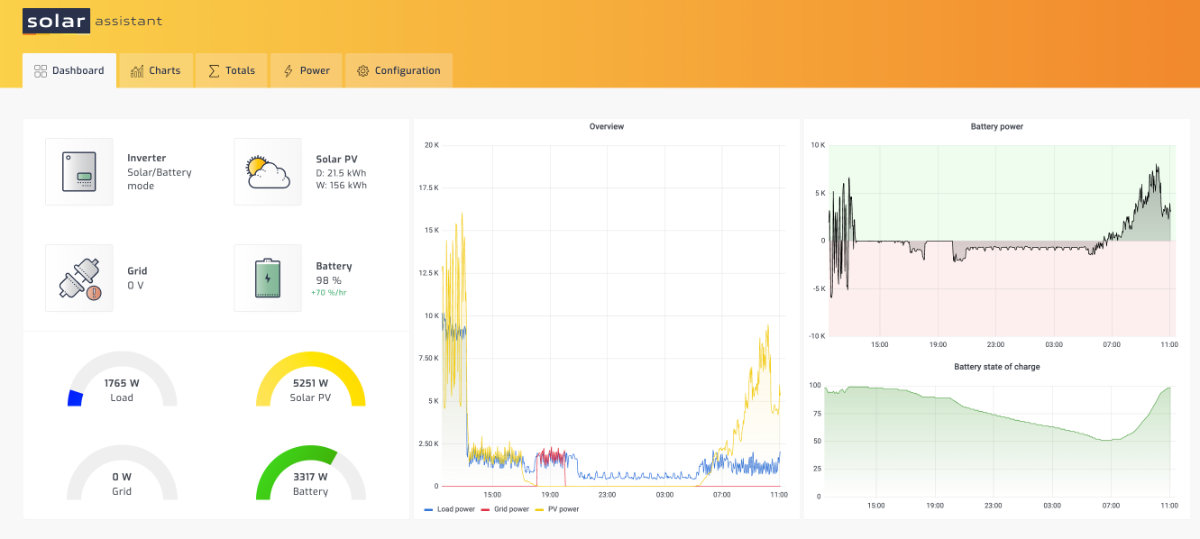
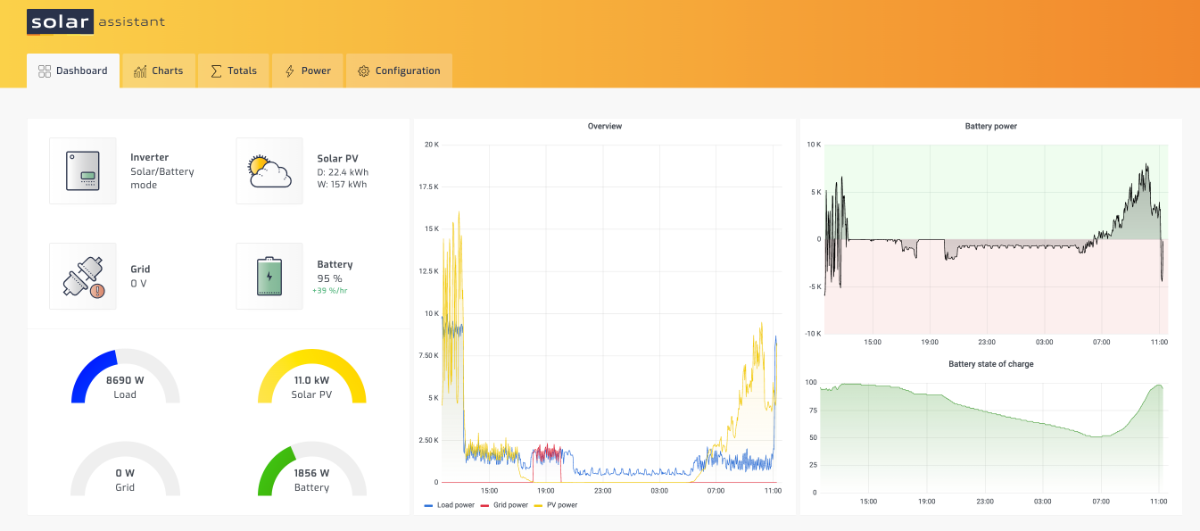
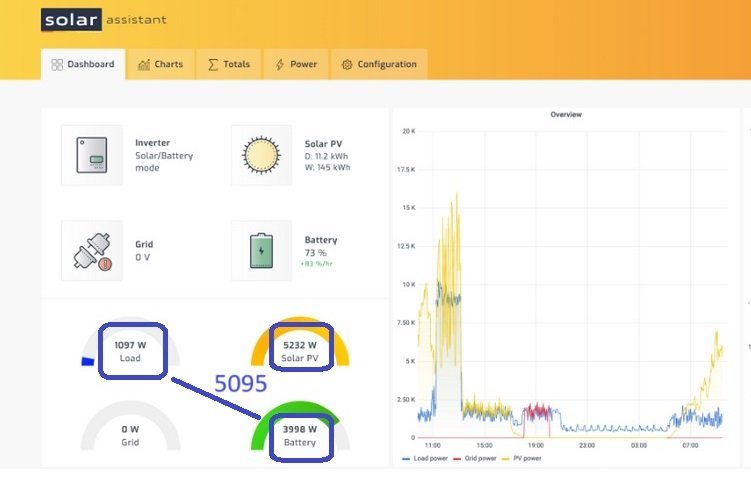
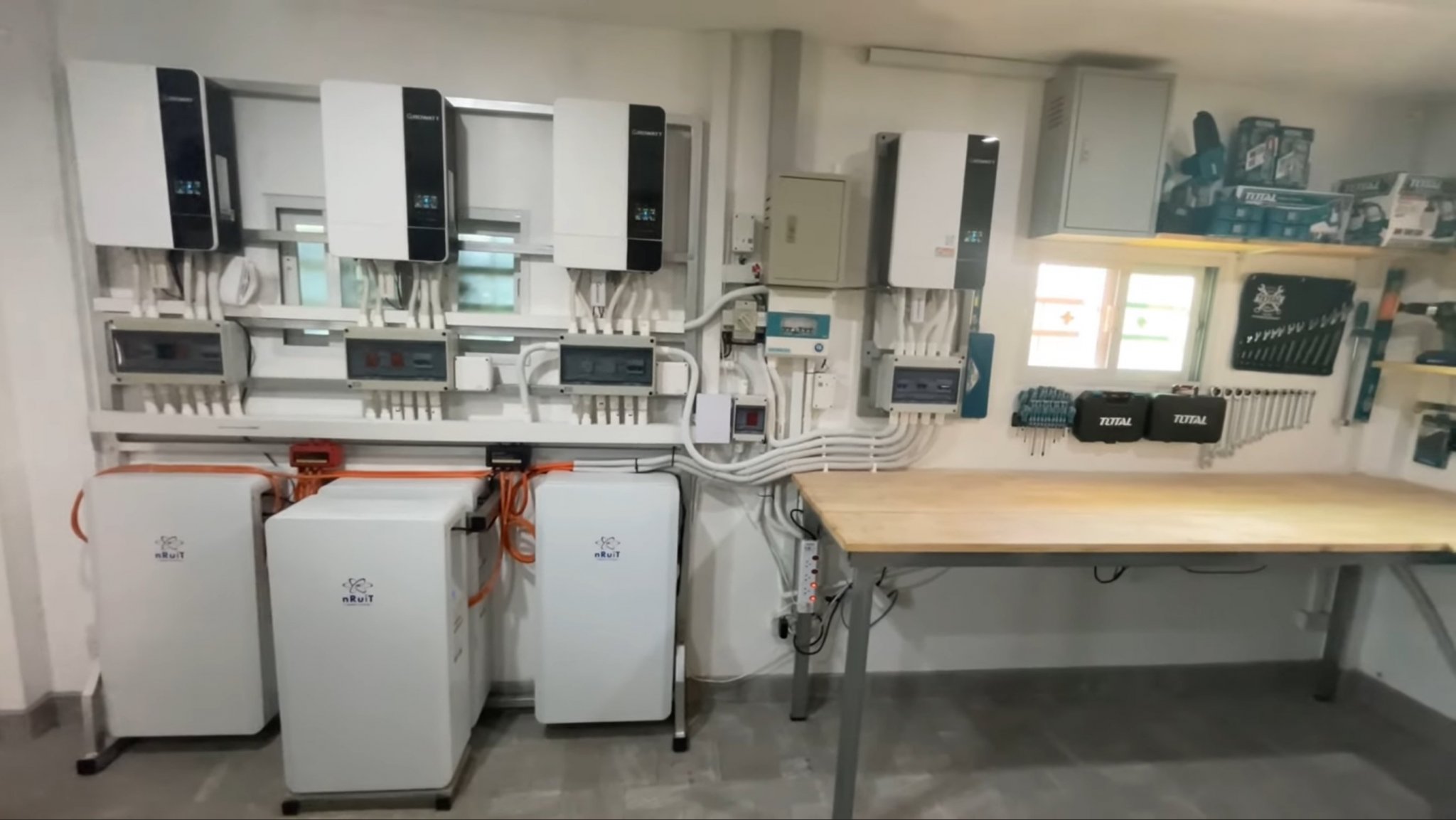
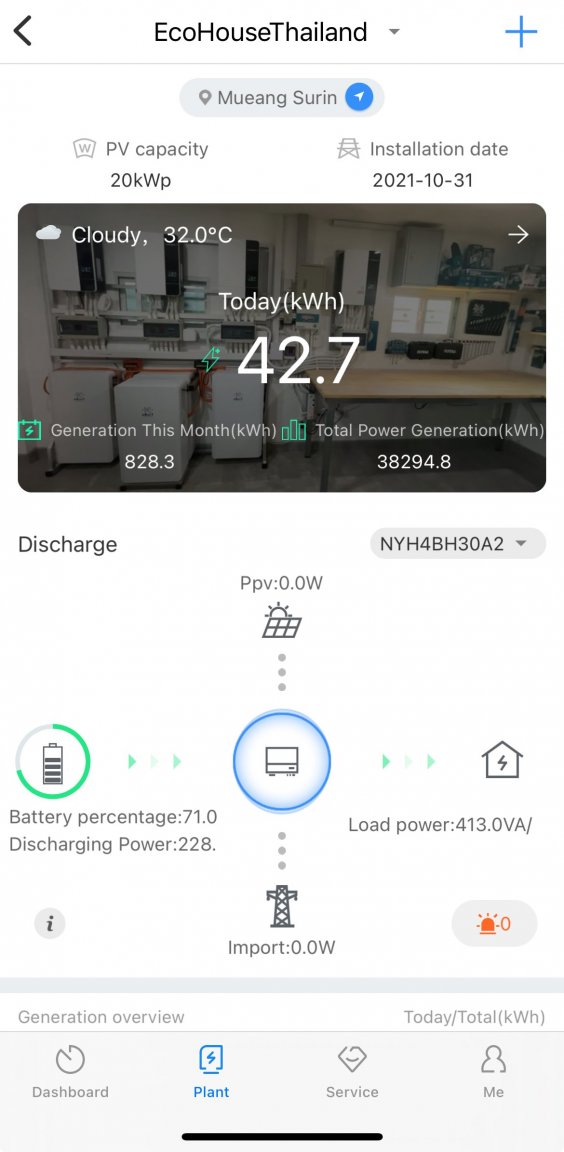
Possible to monitor the extra (unused) power available on a Growatt SPF6000ES ?
in Alternative/Renewable Energy Forum
Posted
I'll post here what's my plan at this stage and, if the topic doesn't get closed due to low activity, I'll post later how it takes shape practically since I think it may be useful for other readers in the future facing the same question.
I made a simple flow chart (attached) to illustrate how I see it after checking the leads you gave me - thanks a lot to all of you for these !
It starts obviously by reading the current supplied by the grid to the inverter, since any positive reading means all the PV supply is used up already : case closed
I'll install a reading device (like these @lom and @Bandersnatch mention) to retrieve the info.
Even if at first I rejected the idea, I'll go the way of empirically testing the amount of unused solar power the panels can supply at a given time by progressively turning on a set of power-using devices (cfr @JBChiangRai and @lom posts)
The data processing and control of the devices will be managed by an Arduino board.
... and in a later stage :
In order to optimize the scheme, there are thus a few more options:
- establishing a reference curve (gathered from real conditions readings) of the maximum potential output of the arrays in full sunny conditions and exploiting it to improve the model. cfr @JBChiangRai approach
- since using only the real time unused power can lead to constant switching on and off of the devices, estimating the general weather conditions of the moment would be useful to add to the data to be taken into account.
It could be an app (like the Solcast @Crossy mentions) or it could be a hardware setup reading the luminosity in a cone - like 45° wide - around the sun position. That way, the board can smoothen the cycles based on objective conditions.
The first option means being able to extract the infos from the app to be exploitable by the processor. The second means getting my tools ready.
- I've also been told that the PV voltage reading of the PV supply could help estimate the unused power, the rationale being that it was a direct result of the inverter restricting the PV input to its current needs, and that the right equation would give the answer (arrays specs being the main part of it).
The explanations I got far exceed my skills in the field so that I won't go that way...
Thanks again 😉